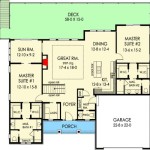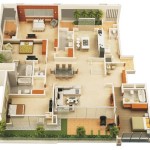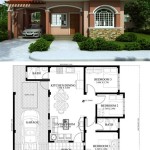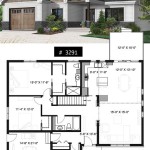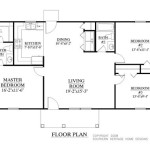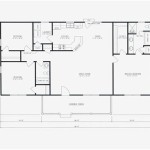Craftsman House Plans: 1800 Square Feet of Timeless Design
The Craftsman architectural style, born from the Arts and Crafts movement of the late 19th and early 20th centuries, continues to resonate with homeowners today. Characterized by its emphasis on natural materials, handcrafted details, and a harmonious connection to the surrounding environment, the Craftsman aesthetic evokes a sense of warmth, comfort, and enduring quality. A Craftsman house plan of 1800 square feet offers a versatile footprint, allowing for a balance of spacious living areas and intimate retreats, perfect for families, couples, or individuals seeking a residence that embodies both functionality and timeless beauty.
This article explores key aspects of Craftsman house plans within the 1800 square foot range, delving into their defining features, common layouts, design considerations, and practical advantages. The information presented aims to provide a comprehensive understanding of this popular architectural style, assisting individuals in evaluating its suitability for their lifestyle and housing needs.
Defining Features of the Craftsman Style
Several distinctive elements contribute to the unique character of Craftsman architecture. Identifying these features allows for a clear understanding of the style's core principles and aesthetic appeal. These elements are not merely decorative additions but integral components of the overall design philosophy.
Low-Pitched Roofs with Wide Overhanging Eaves: A low-pitched gable or hipped roof is a hallmark of the Craftsman style. The wide, overhanging eaves provide protection from the elements and create deep shadow lines, contributing to the house's visual depth and grounded appearance. Often, exposed rafter tails or decorative brackets are incorporated under the eaves, showcasing the attention to detail characteristic of the style.
Prominent Front Porch: The front porch is not just an architectural feature but an integral part of the Craftsman house's social fabric. Typically supported by tapered columns, often resting on stone or brick piers, the porch creates a welcoming transition between the public and private realms. It provides a space for relaxation, socializing, and enjoying the outdoors, fostering a sense of community and connection with the neighborhood.
Natural Materials and Earth Tones: Honesty in materials is a core tenet of the Craftsman style. Natural materials such as wood, stone, and brick are used extensively, both on the exterior and interior. Earth tones, including browns, greens, and grays, are prevalent, reflecting the style's connection to nature. These colors are often incorporated in siding, roofing, and trim, creating a harmonious and understated palette.
Exposed Structural Elements: Rather than concealing structural components, Craftsman design often celebrates them. Exposed beams, rafters, and posts are common features, showcasing the craftsmanship and construction techniques used. This emphasis on structural integrity adds a sense of solidity and permanence to the house.
Generous Use of Wood Interior Trim: The interior of a Craftsman house is characterized by extensive use of wood trim. Wide baseboards, window and door casings, and crown molding add richness and detail to the living spaces. Oak, maple, and fir are commonly used woods, often finished with a natural stain to highlight their grain and texture.
Fireplace as a Focal Point: The fireplace often serves as the central focal point of the living room in a Craftsman house. Typically constructed of brick or stone, the fireplace provides warmth, comfort, and a sense of gathering. The mantel is often crafted from wood and serves as a decorative element, showcasing handcrafted details and personal touches.
Common Layouts for 1800 Square Foot Craftsman Homes
An 1800 square foot Craftsman house plan provides ample space for comfortable living. Several popular layout options exist, each catering to different lifestyles and family needs. Understanding these common layouts can help prospective homeowners identify a plan that best suits their requirements.
Single-Story Ranch Style: A single-story ranch-style Craftsman house offers ease of access and a seamless flow between rooms. This layout is particularly well-suited for individuals with mobility concerns or those who prefer a single-level living arrangement. Within 1800 square feet, a single-story plan can typically accommodate three bedrooms, two bathrooms, a spacious living room, a kitchen with a dining area, and a laundry room.
Two-Story Design with Master Suite on the Main Floor: This layout places the master bedroom and ensuite bathroom on the main floor, offering convenience and privacy. The upper level typically houses additional bedrooms and bathrooms, providing separate living spaces for family members or guests. This configuration is ideal for families with young children or those who desire a dedicated master retreat.
Split-Level Design: A split-level Craftsman house features staggered floor levels, creating distinct living zones. This layout can be particularly effective on sloping lots, allowing for efficient use of space. The entry level often includes the living room and kitchen, while the upper levels house the bedrooms and bathrooms. A lower level might be used for a family room, recreation area, or additional storage space.
Open Concept Living: Many modern Craftsman house plans incorporate an open-concept design, blending the living room, kitchen, and dining area into a single, unified space. This layout promotes social interaction and creates a sense of spaciousness. It is particularly well-suited for entertaining and allows for flexible furniture arrangements.
Regardless of the specific layout, an 1800 square foot Craftsman house plan typically includes well-defined zones for living, sleeping, and preparing meals. Careful consideration is given to the flow between rooms, ensuring a comfortable and functional living environment.
Design Considerations for Maximizing Space and Functionality
When designing or selecting an 1800 square foot Craftsman house plan, careful consideration should be given to optimizing space, functionality, and overall livability. Thoughtful design choices can enhance the home's practicality and create a more enjoyable living experience.
Efficient Use of Vertical Space: In two-story or split-level designs, maximizing the use of vertical space is crucial. Incorporating features such as built-in shelving, storage lofts, and vaulted ceilings can enhance the sense of spaciousness and provide additional storage options. Utilizing the attic space for storage or even a bonus room can further increase the home's functionality.
Strategic Window Placement and Natural Light: Maximizing natural light is essential for creating a bright and welcoming interior. Strategically placing windows to capture sunlight throughout the day can reduce the need for artificial lighting and create a more cheerful atmosphere. Consider incorporating skylights or transom windows to bring additional light into interior spaces.
Built-In Storage Solutions: Built-in storage solutions are a hallmark of Craftsman design, offering both practicality and aesthetic appeal. Incorporating features such as built-in bookshelves, window seats with storage compartments, and custom cabinetry can maximize storage space and minimize clutter. These built-in elements also contribute to the home's overall character and charm.
Flexibility and Adaptability: Designing for flexibility and adaptability is essential for ensuring that the home can meet the evolving needs of its occupants. Consider incorporating features such as a home office that can be converted into a guest room, or a basement that can be finished as a recreation area or additional living space. Designing for future adaptability can increase the home's long-term value and functionality.
Outdoor Living Spaces: The Craftsman style emphasizes a connection to the outdoors. Designing for outdoor living spaces, such as a covered porch, patio, or deck, can extend the home's living area and provide opportunities for relaxation and entertainment. Consider incorporating features such as an outdoor fireplace or kitchen to enhance the outdoor living experience.
By carefully considering these design elements, homeowners can create an 1800 square foot Craftsman house that is both beautiful and functional, meeting their specific needs and preferences.

Craftsman Style House Plan 3 Beds 2 Baths 1800 Sq Ft 21 247 Houseplans Com

Craftsman Style House Plan 3 Beds 2 Baths 1800 Sq Ft 48 414 Plans One Story Best

1800 Sq Ft Craftsman House Plan Country Style 141 1077

Traditional Style House Plan 3 Beds 2 Baths 1800 Sq Ft 56 635 Houseplans Com

Craftsman Style House Plan 4 Beds 3 Baths 1800 Sq Ft 56 557 Houseplans Com

House Plan 92385 Craftsman Style With 1800 Sq Ft 3 Bed Bath

1800 Sq Ft Craftsman House Plan 3 Bedrm 2 Bath 141 1035

Craftsman House Plan 3 Bedrooms 2 Bath 1800 Sq Ft 50 141 Bungalow Style Plans New

House Plan 59147 Craftsman Style With 1800 Sq Ft 3 Bed 2 Bath

Craftsman Style House Plans With Bungalow Features

